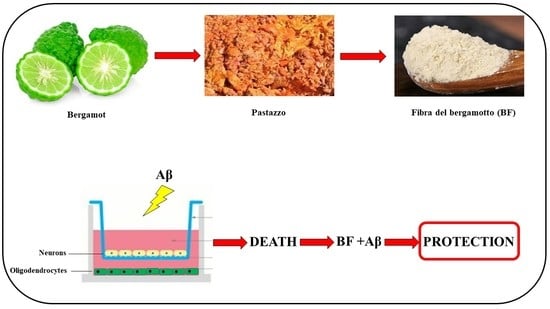Protective Role of an Extract Waste Product from Citrus bergamia in an In Vitro Model of Neurodegeneration
Abstract
Share and Cite
Maiuolo, J.; Bosco, F.; Guarnieri, L.; Nucera, S.; Ruga, S.; Oppedisano, F.; Tucci, L.; Muscoli, C.; Palma, E.; Giuffrè, A.M.; et al. Protective Role of an Extract Waste Product from Citrus bergamia in an In Vitro Model of Neurodegeneration. Plants 2023, 12, 2126. https://doi.org/10.3390/plants12112126
Maiuolo J, Bosco F, Guarnieri L, Nucera S, Ruga S, Oppedisano F, Tucci L, Muscoli C, Palma E, Giuffrè AM, et al. Protective Role of an Extract Waste Product from Citrus bergamia in an In Vitro Model of Neurodegeneration. Plants. 2023; 12(11):2126. https://doi.org/10.3390/plants12112126
Chicago/Turabian StyleMaiuolo, Jessica, Francesca Bosco, Lorenza Guarnieri, Saverio Nucera, Stefano Ruga, Francesca Oppedisano, Luigi Tucci, Carolina Muscoli, Ernesto Palma, Angelo Maria Giuffrè, and et al. 2023. "Protective Role of an Extract Waste Product from Citrus bergamia in an In Vitro Model of Neurodegeneration" Plants 12, no. 11: 2126. https://doi.org/10.3390/plants12112126
APA StyleMaiuolo, J., Bosco, F., Guarnieri, L., Nucera, S., Ruga, S., Oppedisano, F., Tucci, L., Muscoli, C., Palma, E., Giuffrè, A. M., & Mollace, V. (2023). Protective Role of an Extract Waste Product from Citrus bergamia in an In Vitro Model of Neurodegeneration. Plants, 12(11), 2126. https://doi.org/10.3390/plants12112126








